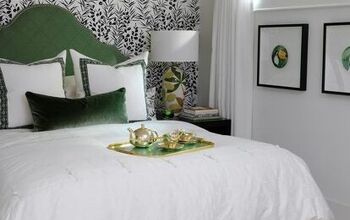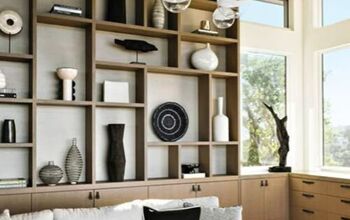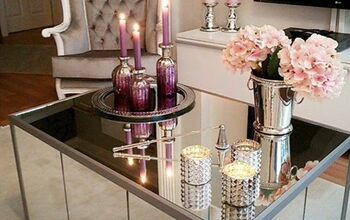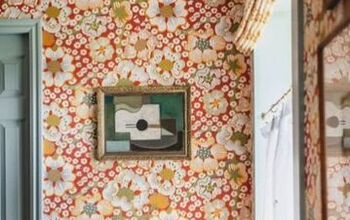How to Pick Lighting Fixtures for Your Home, Room By Room

Today, I'm going to be talking about how to pick lighting fixtures for your home and give you a guide on how to select them for different rooms.
Redesign Recommends!
Want to save?
Get your 30-day free trial of Amazon Prime today before Prime big deal days on October 8-9th!
Lighting is such an important element when it comes to interior design. Without proper lighting, even the most beautifully styled interiors can’t be seen. It’s crucial to pick the right fixtures to amplify the look of a space. Think of lighting as that final piece of jewelry or accessory you add to make a room more aesthetic—that’s exactly what lighting fixtures do.
With all the variety out there, you might feel confused: What should I use for my dining room? What about my bedroom? Living room? Bathroom? It can get tricky, which is why I’m here to guide you on picking the right lighting fixtures for different rooms in your home. So without further ado, let’s get into it!
Table of contents
The Three Types of Lighting
Before I jump into specific rooms, it’s important to understand that there are three main types of lighting in interior design: ambient lighting, task lighting, and accent lighting.
Ambient lighting is the general light we use to illuminate a space. It could be a basic light bulb, recessed lights, and so on. This type of lighting helps us move comfortably around a room.
Accent lighting, on the other hand, is used to highlight focal points, like a beautiful painting or architectural feature. Think wall sconces or track lighting aimed at specific objects.
Lastly, task lighting is exactly what it sounds like: lighting that helps you complete specific tasks. Desk lamps, floor lamps for reading, or pendant lights over a kitchen island fall into this category.
Many of us tend to just rely on ambient lighting—the basic overhead light. But if you want to achieve a truly aesthetic interior, you need to layer your lighting.
Layering involves combining all three types of lighting: ambient, accent, and task lighting. Add a floor lamp, a table lamp, or some sconces to create a cozy, well-lit room. Remember, layering is key!
The Different Types of Lighting Fixtures
Now, let’s talk about the different types of lighting fixtures you can use: wall sconces, pendants, chandeliers, lamps, and flush mounts.
Wall sconces are mounted directly onto walls, often in pairs, and are perfect for flanking mirrors, fireplaces, or beds.
Pendant lights hang from the ceiling, often low by a cord or chain, and are both functional and decorative.
Chandeliers, as we know, make grand statements and are typically suspended from the ceiling.
Lamps—whether table or floor—provide localized task lighting.
Lastly, flush mounts are fixed directly to the ceiling and don’t hang down like pendants or chandeliers.
Entryway Lighting
Let’s start with the entryway. This is the first space people see when they enter your home, so you want to set the right mood.
Consider a large lamp or chandelier to make a grand statement. If you have artwork displayed here, add accent lighting to highlight those pieces.
Living Room Lighting
Next is the living room, one of the most important areas in the home. Since it’s a space where you’ll entertain guests, it should look inviting and stylish.
A large chandelier can act as a focal point, but make sure it complements the style of your room. Whether you’re going for contemporary, glam, or something else, your chandelier should match.
But don’t stop there—add recessed lighting for brightness, and layer it with floor lamps in dark corners, table lamps, and accent lighting for any feature walls or artwork.
Dining Room Lighting
Moving on to the dining room, which is usually quite simple to light.
The dining table is the focal point, so you can center your lighting fixture—either a chandelier or pendant lights—above it.
If you have a round table, choose a circular fixture; if it’s rectangular, go for a linear fixture or multiple pendants.
For an eight-foot ceiling, your fixture should hang about 65 to 75 centimeters from the table.
Kitchen Lighting
The kitchen requires more complex lighting.
Start with recessed lights in the ceiling for general brightness, and if you have an island, hang pendant lights or a chandelier above it to create a focal point.
Consider adding under-cabinet lighting for work areas.
Bedroom Lighting
For the bedroom, you won’t need as many lighting sources.
A chandelier or pendant on the ceiling and some wall sconces or table lamps should suffice. Opt for warm lighting to create a cozy, relaxing atmosphere.
A trend I love is replacing table lamps with pendant lights that hang from the ceiling near your bedside. It’s a stunning look!
Bathroom Lighting
Don’t forget about the bathroom! Layering lighting here is just as important.
Start with recessed lighting for overall brightness, and add task lighting around the mirror.
If you have a bathtub, consider a chandelier or pendant above it for a luxurious touch.
Staircase Lighting
Lastly, if your home has a staircase, don’t overlook it!
Add accent lighting to illuminate the steps and make this area safer and more aesthetically pleasing.
Final Tips
So there you have it—a guide to picking the right lighting fixtures for your home. Always remember to consider both cool and warm lighting and think carefully before making your decision. I hope you’ve learned something today and feel more confident about choosing the perfect lighting for your space.
Thanks so much for watching! Don’t forget to like, comment, subscribe, and share—I’d be truly grateful. See you next week in another video. Love you guys so much!










































































Comments
Join the conversation